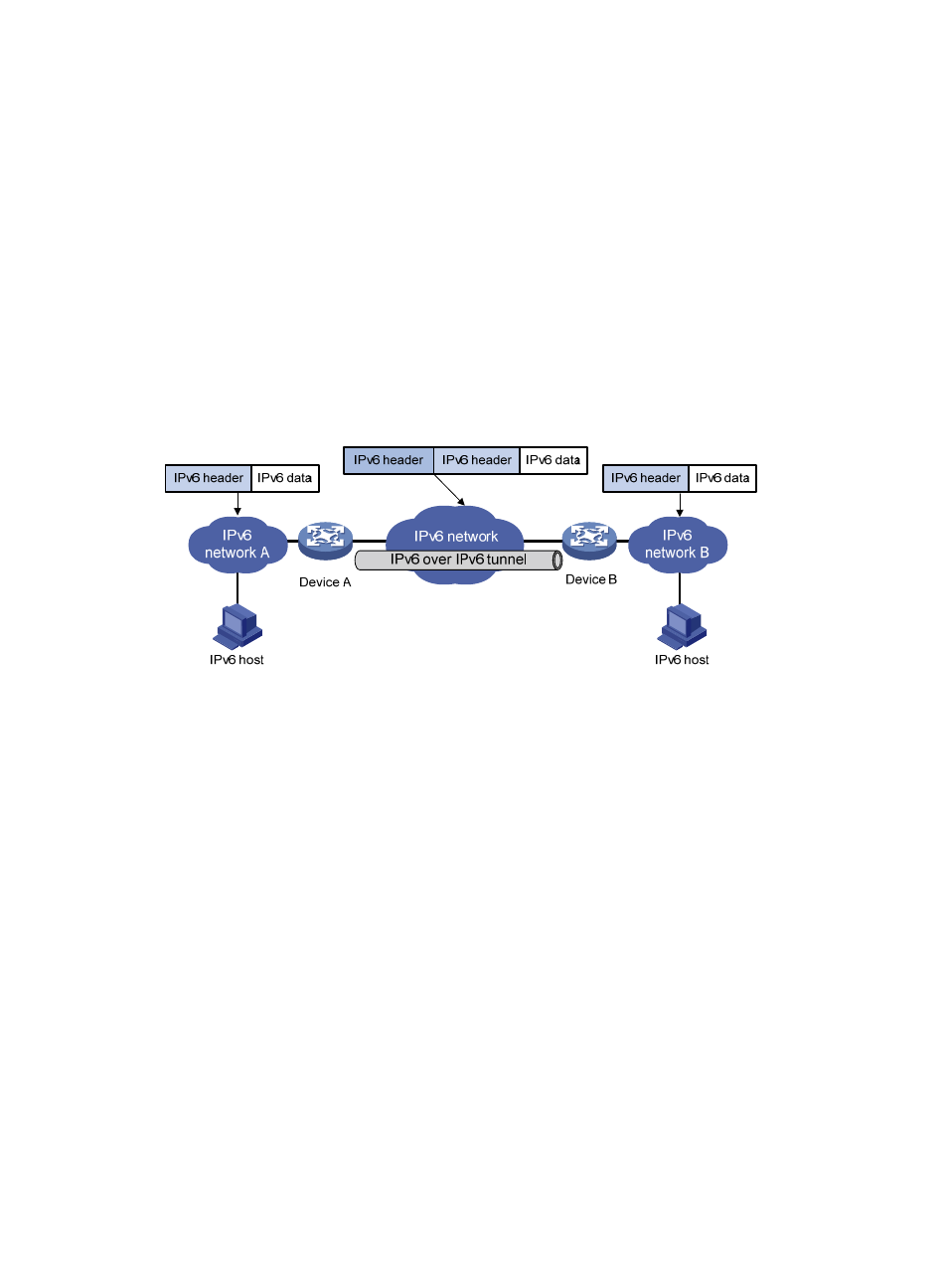Ipv6 over ipv6 tunneling, Protocols and standards – H3C Technologies H3C S5560 Series Switches User Manual
Page 225

210
e.
Upon receiving the IPv6 packet from the attached IPv6 network, Device B delivers the packet
to the IPv6 protocol stack to examine the protocol type encapsulated in the data portion of the
packet.
f.
If the protocol type is IPv4, the IPv6 protocol stack delivers the packet to the tunneling module.
g.
The tunneling module removes the IPv6 header and delivers the remaining IPv4 packet to the
IPv4 protocol stack.
h.
The IPv4 protocol stack forwards the IPv4 packet.
IPv6 over IPv6 tunneling
IPv6 over IPv6 tunneling (RFC 2473) enables isolated IPv6 networks to communicate with each other over
another IPv6 network. For example, two isolated IPv6 networks that do not want to show their addresses
to the Internet can use an IPv6 over IPv6 tunnel to communicate with each other.
Figure 86 Principle of IPv6 over IPv6 tunneling
shows the encapsulation and de-encapsulation processes.
•
Encapsulation:
a.
After receiving an IPv6 packet, Device A submits it to the IPv6 protocol stack.
b.
The IPv6 protocol stack uses the destination IPv6 address of the packet to find the egress
interface. If the egress interface is the tunnel interface, the stack delivers it to the tunnel
interface.
c.
After receiving the packet, the tunnel interface adds an IPv6 header to it and submits it to the
IPv6 protocol stack.
d.
The IPv6 protocol stack forwards the packet according to its destination IPv6 address.
•
De-encapsulation:
e.
Upon receiving the IPv6 packet, Device B delivers it to the IPv6 protocol stack.
f.
The IPv6 protocol stack checks the protocol type of the data portion encapsulated in the IPv6
packet. If the encapsulation protocol is IPv6, the stack delivers the packet to the tunnel module.
g.
The tunnel module de-encapsulates the packet and sends it back to the IPv6 protocol stack.
h.
The IPv6 protocol stack forwards the IPv6 packet.
Protocols and standards
•
RFC 1853, IP in IP Tunneling
